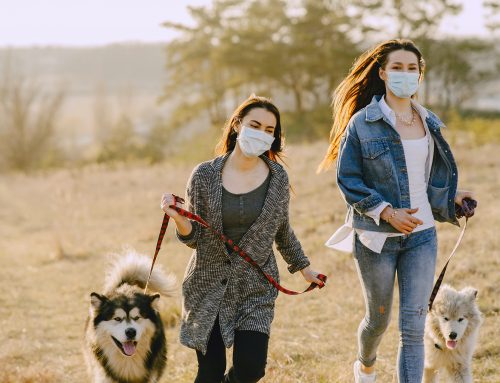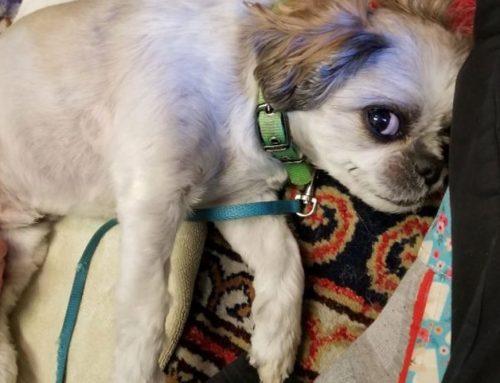
A cat with heavy tartar accumulation having dentistry performed
One problem that we consistently run into in veterinary medicine is that it is difficult for us to really get inside our pet’s heads and find out what they are feeling. We often joke that if they could talk, our animal companions would just say “feed me” or “pet me” or “throw the ball again” over and over, and I am quite sure that we would hear- “I love you” at least once in a while.
This month is all about teeth, so what would our pets say about their mouths if they could talk? This is a tricky question to answer. We know that dogs & cats have the same nervous systems as we do and are capable of feeling pain in the same ways that we do. When we talk to human dental experts they suggest that people with infections of the teeth, gums and surrounding bones can experience all kinds of discomfort based on the severity of their condition. In the early stages of periodontal disease, people rarely experience pain or discomfort, but will often see bleeding when they are brushing their teeth or having oral exams done. These early stages are not often seen clinically in veterinary medicine unless teeth are brushed regularly at home or if blood is seen on chew toys.
At later stages of human gum disease, bad breath, plaque build up and gum recession are noted. This is considered advanced periodontal disease in people and can be accompanied by a bad taste in the mouth, pain in the gums or teeth, jaw pain, neck and shoulder pain or even headaches or migraines. It is reasonable to assume that if people experience these side effects, then our animal patients might too. Unfortunately, this stage of dental disease is often overlooked as well and we will hear that the cat “Just has bad breath because he is a cat” or the dog’s breath “Could clear the room when he tries to lick your face”. Bad breath is often a sign that something bad is going on in the mouth.
In the late stages of periodontal disease (when we often see dogs and cats presented to the hospital for dental concerns), loose or broken teeth, infection of the gums or surrounding bone and reluctance to chew on one side of the mouth are major concerns. People who have this level of dental problems are able to identify the discomfort and take themselves to the dentist to have their teeth looked at. When our pets experience this level of oral pain, we have to be vigilant to look for the signs that might tell us they are sore. Changes in behaviour, reluctance to take treats or food, sleepiness or general lethargic attitude can all be signs, but unfortunately most pets will just keep on doing what they are doing and never let us know that they are in pain.
We frequently hear from owners that after their pets have dental cleanings under anesthesia and have painful, loose teeth removed, their attitudes completely change. They become brighter, happier & more energetic. Often we don’t even notice the subtle changes that oral disease can cause until they are taken away. It is because of this that we owe it to our pets to look for conditions that might cause pain or discomfort and solve them before they do. Regular oral care at home that includes tooth brushing is the best way to know what is going on inside your pet’s mouth, and regular cleanings under anesthesia at your veterinary hospital as recommended by your vet is the best solution for dealing with oral problems before they become painful.
-Dr. Rob




